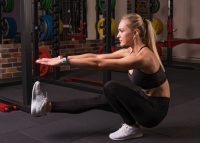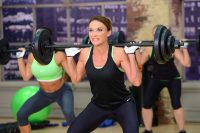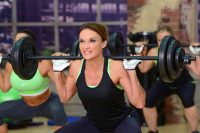
4 Benefits of Deep Squats Over Parallel Squats
Are deep squats part of your strength-training routine? Squatting below parallel carries some added advantages you don’t get when you squat shallower. Here are four you should know about.

Are deep squats part of your strength-training routine? Squatting below parallel carries some added advantages you don’t get when you squat shallower. Here are four you should know about.

Are you ready to take squats to a new level? There’s a tough squat variation that you probably aren’t already doing. This variation can help you build strength, power, and improve your balance too. Here’s what it is.

Once you’ve mastered squats and some of the most common squat variations, you may need to “shake up” your squat routine to get those muscles to grow. Here are five ways to make squats harder and add variety to your squat routine.

Do you have trouble doing squats? It may not be a lack of strength but anatomical issues and a lack of mobility. Here are some ways your anatomy can affect your ability to squat and what you can do to correct your squat.

Do you have knee pain when you squat? Don’t be too quick to assume it’s knee arthritis. There’s another common condition that causes knee pain when you squat. Here’s what you should know about a condition called patellofemoral syndrome.

Squats have varying levels of difficulty. If you’re a beginner, it’s best to start easy and gradually work your way up to more advanced squat variations. Here’s a good sequence to help you gradually ease into doing squats with proper form.

Are your inner thighs getting enough work? Standard squats, even deep ones, don’t work the inner thigh muscles well. Fortunately, there are a few squat variations that target the inner thighs. Here’s what they are and why you should include them in your routine.

Are half squats a copout or do they have some benefits you don’t get from full squats? Here’s what science shows and why both belong in your routine.

Do you typically do squats with both feet planted on the ground? Then, it may be time to take on a new challenge – the single-leg squat. Here’s why you should add this challenging exercise to your fitness routine.

Does your back hurt when you squat? It’s a common problem – but why? Read on and discover why you may experience back discomfort when you squat and how to correct it.

Squats are a no-frills move that works the muscles in your lower body. Learn how squat depth impacts the muscles you work

How deep do you squat? Some people who believe they’re doing a full squat are only doing a partial one. Descending below parallel also has additional benefits. Here’s why squat depth matters.